Abstract
The lysis of human erythrocytes by Staphylococcus aureus delta-toxin proceeded without a lag and was directly proportional to toxin concentration and temperature of incubation. Lysis was complete within 8 min. Addition of saturated, straight-chain fatty acids of 13 to 19 carbons increased the activity of delta-toxin, whereas those with 21 to 23 carbons were inhibitory. Palmitic acid was the fatty acid most active in augmenting delta-toxin, but its effect could be abolished by the simultaneous addition of either tricosanoic acid or egg lecithin.
Full text
PDF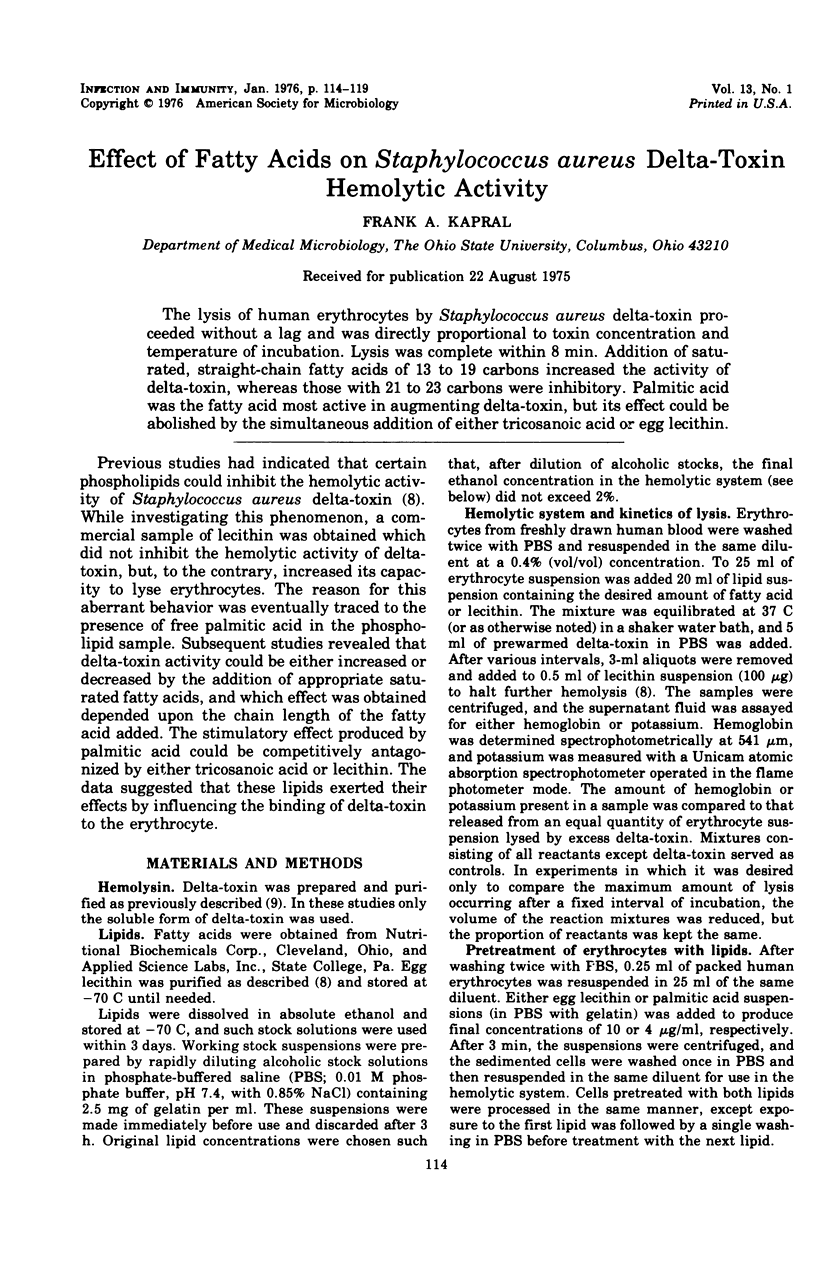
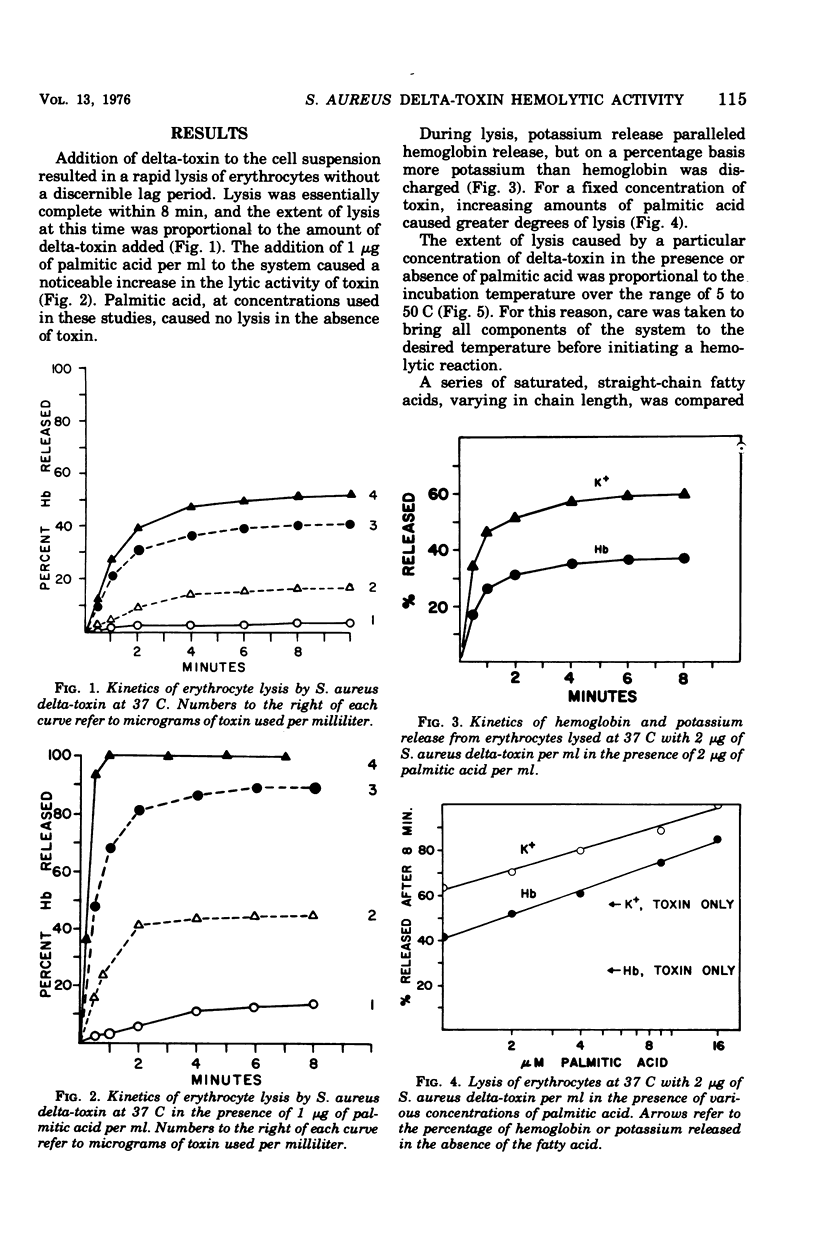
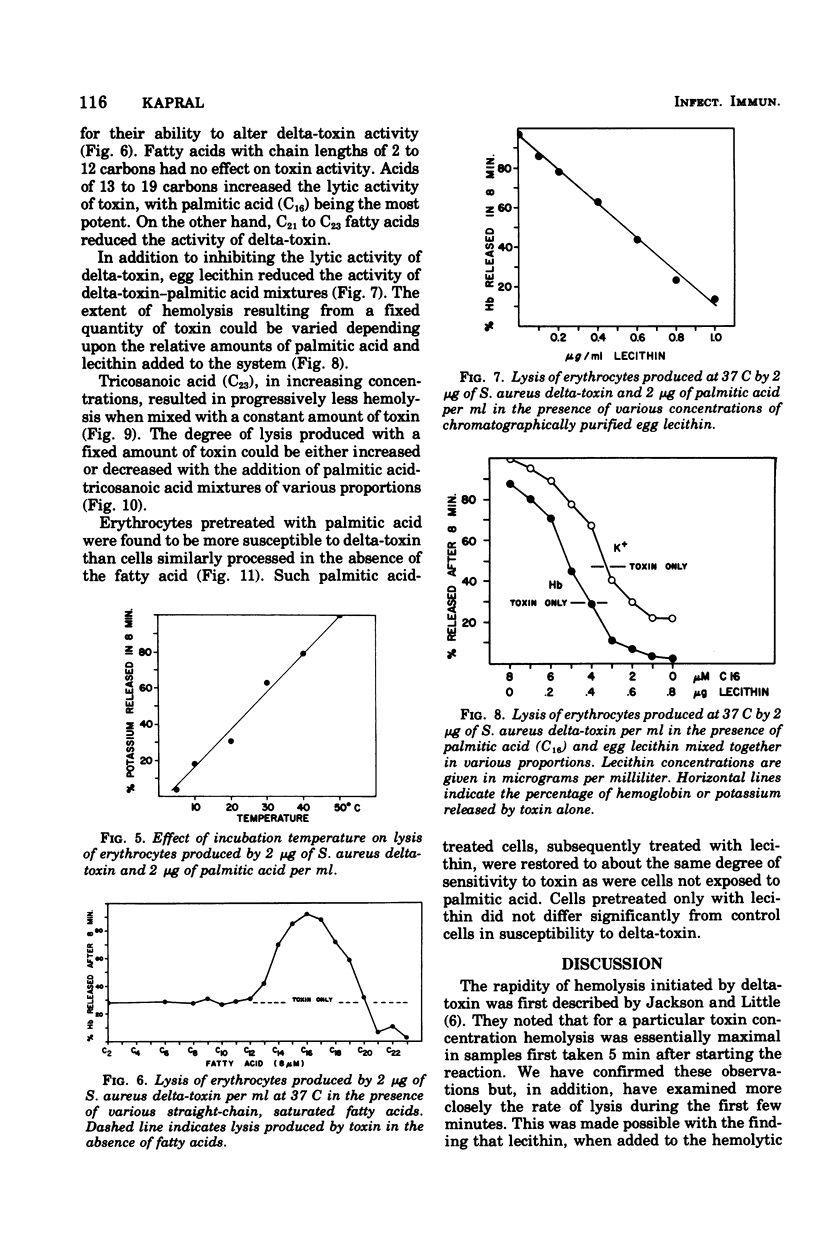
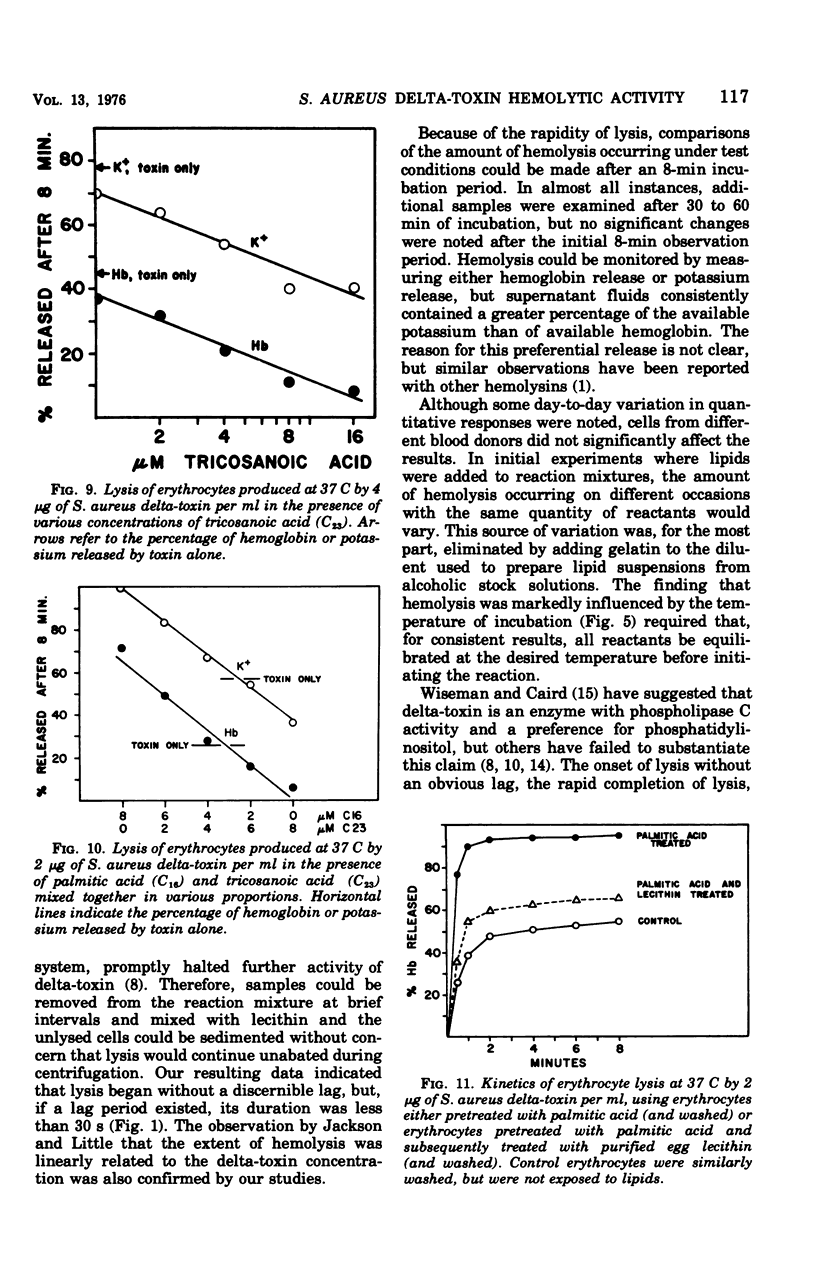
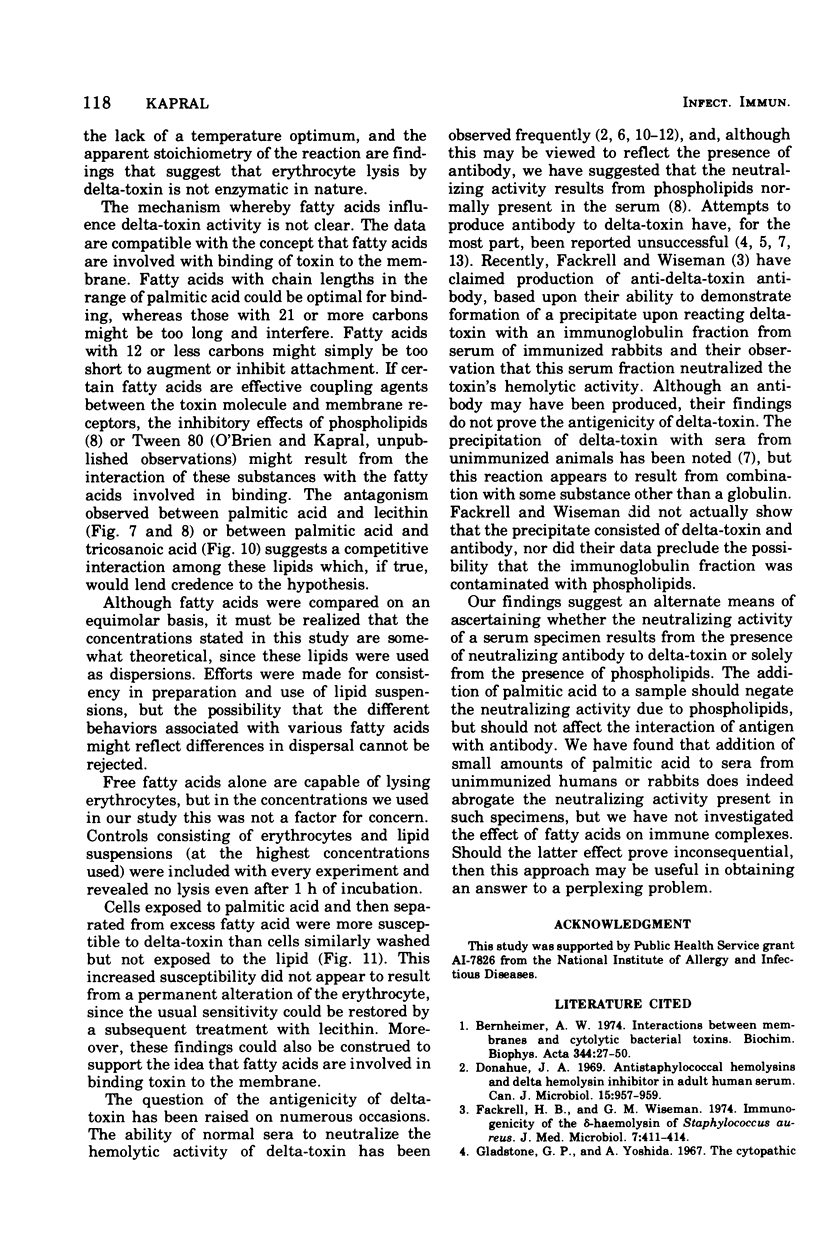

Selected References
These references are in PubMed. This may not be the complete list of references from this article.
- Donahue J. A. Antistaphylococcal hemolysins and delta hemolysin inhibitor in adult human serum. Can J Microbiol. 1969 Aug;15(8):957–959. doi: 10.1139/m69-167. [DOI] [PubMed] [Google Scholar]
- Fackrell H. B., Wiseman G. M. Immunogenicity of the delta-haemolysin of Staphylococcus aureus. J Med Microbiol. 1974 Nov;7(4):411–414. doi: 10.1099/00222615-7-4-411. [DOI] [PubMed] [Google Scholar]
- Gladstone G. P., Yoshida A. The cytopathic action of purified staphylococcal delta-hemolysin. Br J Exp Pathol. 1967 Feb;48(1):11–19. [PMC free article] [PubMed] [Google Scholar]
- Hallander H. O. Characterization and partial purification of staphylococcal delta-lysin. Acta Pathol Microbiol Scand. 1968;72(4):586–600. doi: 10.1111/j.1699-0463.1968.tb00471.x. [DOI] [PubMed] [Google Scholar]
- JACKSON A. W., LITTLE R. M. Staphylococcal toxins. II. Factors affecting hemolysis by delta-lysin. Can J Microbiol. 1958 Oct;4(5):435–444. doi: 10.1139/m58-046. [DOI] [PubMed] [Google Scholar]
- Kantor H. S., Temples B., Shaw W. V. Staphylococcal delta hemolysin: purification and characterization. Arch Biochem Biophys. 1972 Jul;151(1):142–156. doi: 10.1016/0003-9861(72)90483-3. [DOI] [PubMed] [Google Scholar]
- Kapral F. A. Inhibition of Staphylococcus aureus delta hemolysin by phospholipids. Proc Soc Exp Biol Med. 1972 Nov;141(2):519–521. doi: 10.3181/00379727-141-36812. [DOI] [PubMed] [Google Scholar]
- Kapral F. A., Miller M. M. Product of Staphylococcus aureus responsible for the scalded-skin syndrome. Infect Immun. 1971 Nov;4(5):541–545. doi: 10.1128/iai.4.5.541-545.1971. [DOI] [PMC free article] [PubMed] [Google Scholar]
- MARKS J., VAUGHAN A. C. T. Staphylococcal delta-haemolysin. J Pathol Bacteriol. 1950 Oct;62(4):597–615. doi: 10.1002/path.1700620411. [DOI] [PubMed] [Google Scholar]
- Maniar A. C., Weslake C., Warner P. Prevalence of staphylococcal anti-delta lysin in man. Can J Microbiol. 1967 Aug;13(8):925–929. doi: 10.1139/m67-124. [DOI] [PubMed] [Google Scholar]
- Rahal J. J., Jr Comparative effects of purified staphylococcal alpha and delta toxins on mitochondrial metabolism. J Infect Dis. 1972 Jul;126(1):96–103. doi: 10.1093/infdis/126.1.96. [DOI] [PubMed] [Google Scholar]
- Wiseman G. M., Caird J. D. Phospholipase activity of the delta hemolysin of Staphylococcus aureus. Proc Soc Exp Biol Med. 1968 Jun;128(2):428–430. doi: 10.3181/00379727-128-33029. [DOI] [PubMed] [Google Scholar]


